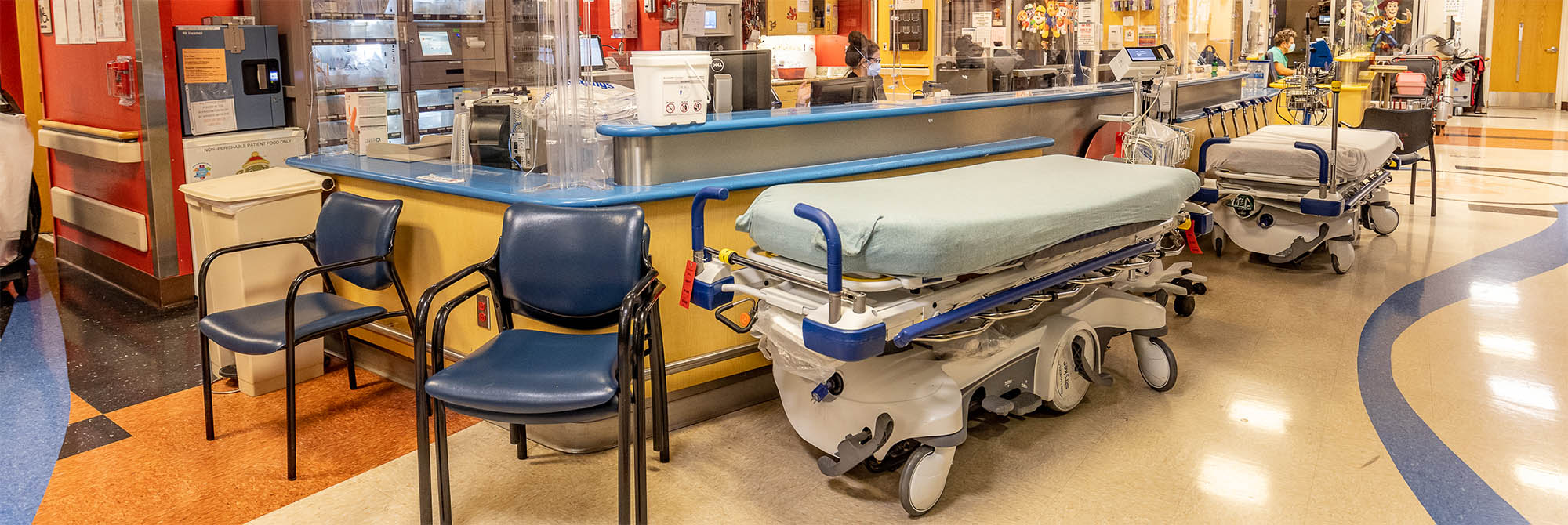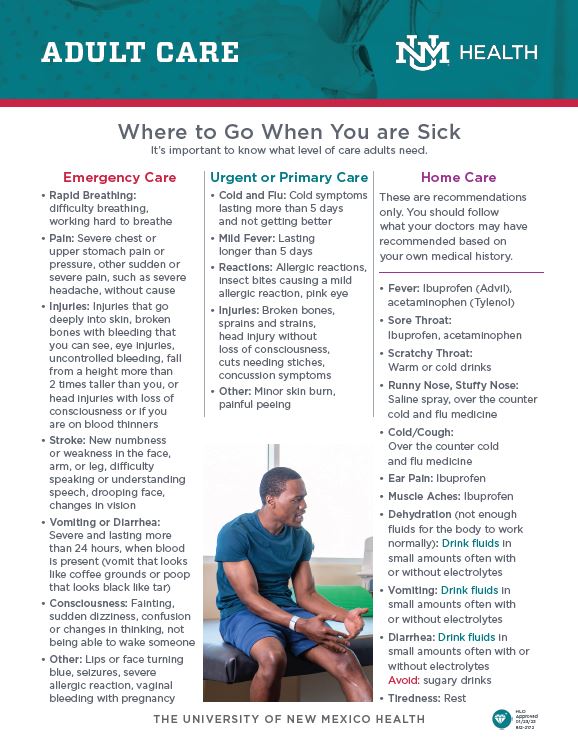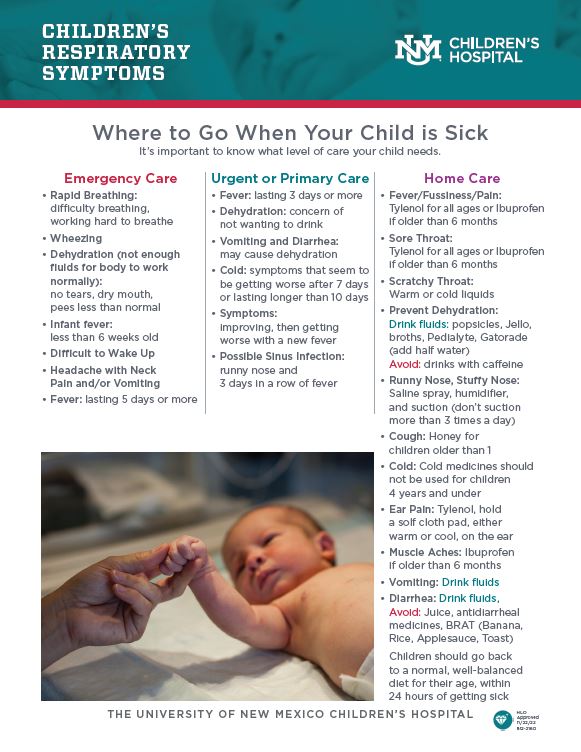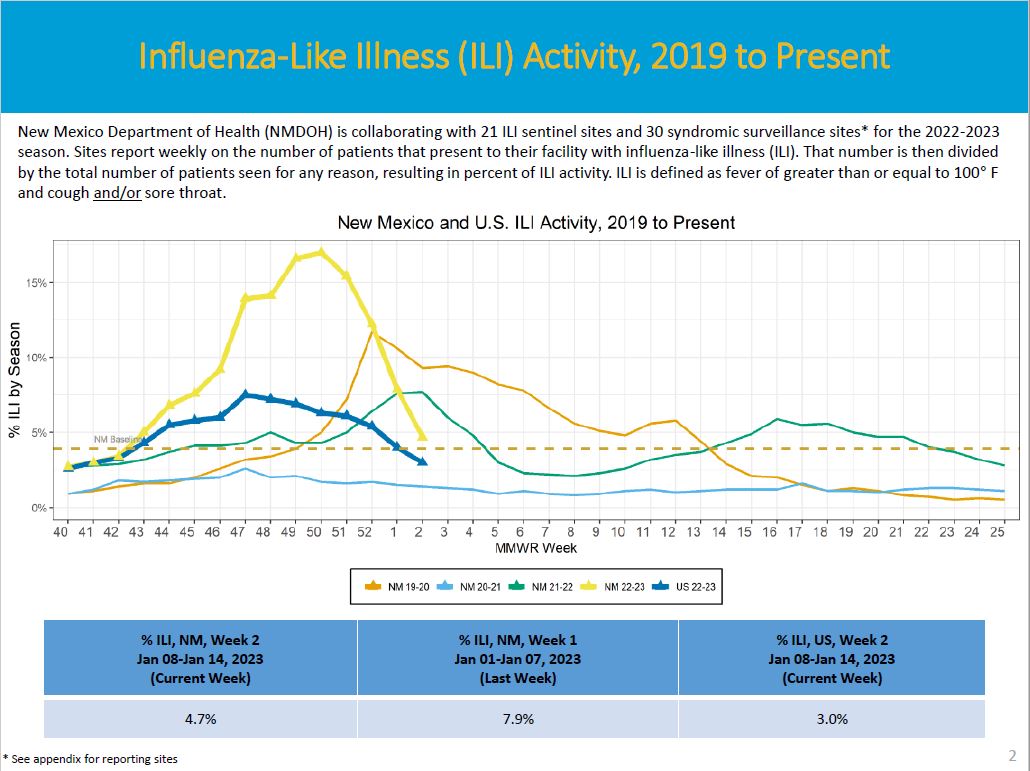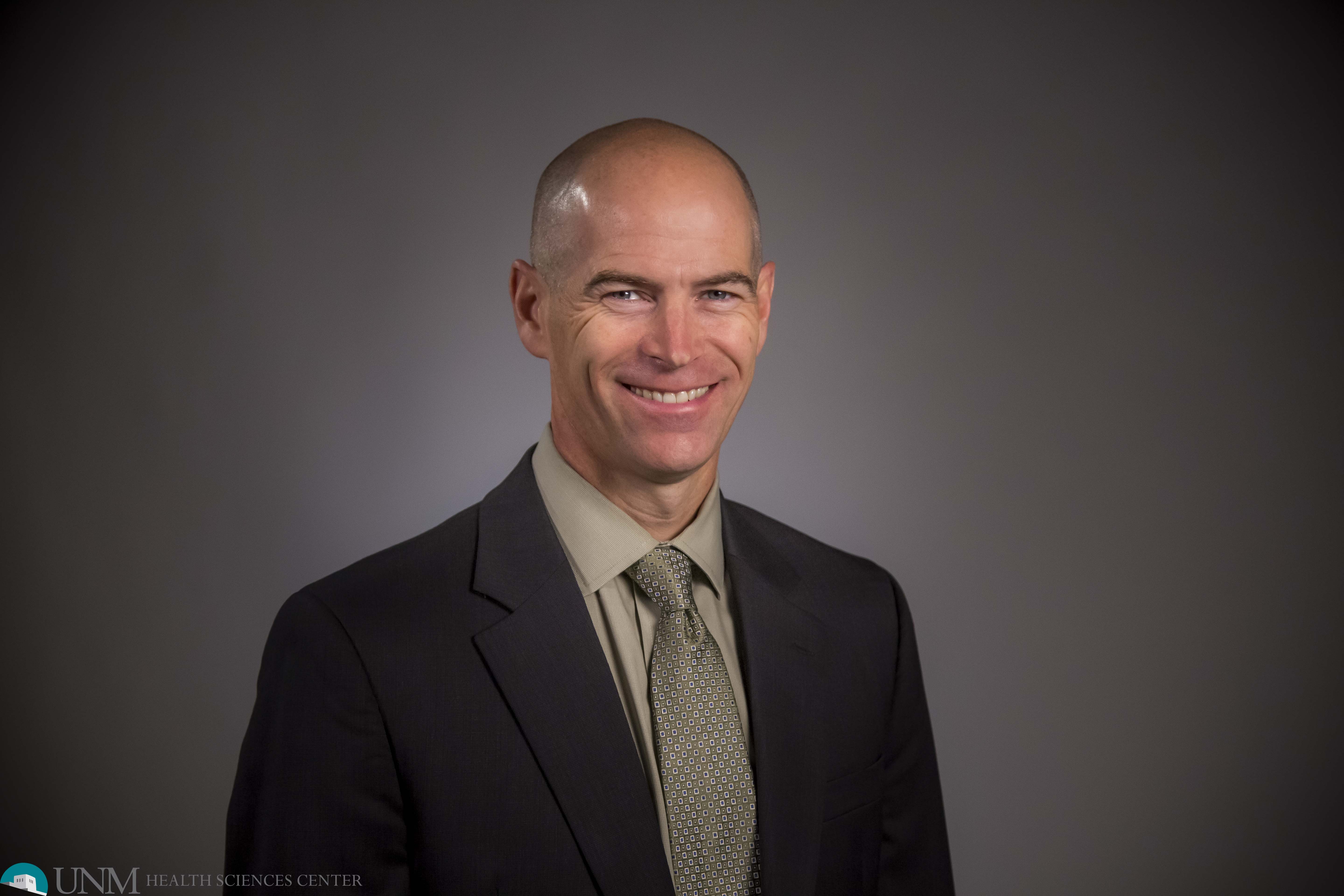After an early and hard-hitting surge of respiratory viruses flooded New Mexico emergency rooms last fall, a trend toward declining case counts has the state breathing a collective sigh of relief.
But New Mexico emergency departments are still full, and that means when you get sick, it’s important to know which symptoms warrant a trip to the hospital or to urgent care, and which ones you can ride out at home.
As cases began rising, The University of New Mexico Hospital requested assistance from the U.S. Department of Health and Human Services.In response, a 14-person federal task force spent two weeks at UNM Children’s Hospital helping to manage the influx of pediatric respiratory cases, especially RSV, that pushed the hospital over maximum capacity.
Chief Medical Officer Steve McLaughlin, MD, said the situation has improved. “As of today, the middle of January, the Children’s Hospital is really back to functioning at its normal, busy winter volume, but definitely manageable.”
While cases of RSV, influenza and COVID-19 are all trending downward (see accompanying graphic) emergency rooms are still full. A chart produced by the New Mexico Department of Health shows pediatric cases of influenza and respiratory illnesses in New Mexico skyrocketed around mid-December, but have since slowly declined.

All of the emergency departments in the state are extremely busy. We’ve had higher than typical numbers, and all of the hospitals are also full. So, it’s important for people who don’t require emergency services or admission to the hospital to seek care elsewhere
“All of the emergency departments in the state are extremely busy,” said Matthew Wilks, MD, chief medical officer at UNM Sandoval Regional Medical Center (SRMC). “We’ve had higher than typical numbers, and all of the hospitals are also full. So, it’s important for people who don’t require emergency services or admission to the hospital to seek care elsewhere.”
Every level of health care has a patient limit, whether it’s primary care, urgent care or an emergency room.
“The capacity for an emergency department is not unlimited,” McLaughlin said. “They can only see so many patients per day. When you make good choices about seeing a primary care doctor or an urgent care instead of coming to an emergency department, that means you are going to get the right care and you are going to get it faster because those environments tend to be quicker.
“It also means that the emergency department’s capacity remains available to take care of those patients who can only be treated there.”
So how do you know where to go? UNM Health experts have created single-page flyers to help adults assess where to when they experience certain symptoms and a guide to help assess what level of care children may need.
However, both McLaughlin and Wilks say certain respiratory symptoms are clear signs that someone should seek emergency care or call 911. They are:
- Drowsiness, confusion, unconsciousness
- Color changes to face (e.g., blue or purple lips)
- Uncontrolled vomiting or diarrhea
- Difficulty breathing
While flu and RSV cases have significantly gone down in New Mexico, both doctors warn it’s not time to let your guard down.
“There are a couple peaks in the respiratory virus, and it is likely to go up again before it completely goes away,” Wilks said. “And as we know from COVID over the last several years, that hasn’t gone away in the summer, whereas flu and RSV typically go down to being very rare in the summer.”
McLaughlin recommends three steps that people should take to minimize illness:
- Regular vaccinations (COVID, influenza and others for immunocompromised)
- Regular hand washing/hand sanitization
- Mask use in high-risk situations, including around the elderly or people with compromised immune systems
At the end of the day, your health is what matters. If you feel you or your child needs emergency care, seek help immediately.
“If you’re really worried that you’re having something seriously wrong, we want you to seek care at an emergency department. Use 911 if you need to,” McLaughlin said. “We don’t want people with serious problems to avoid coming in.”
